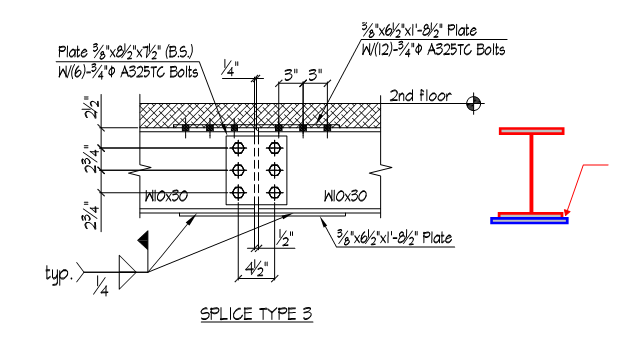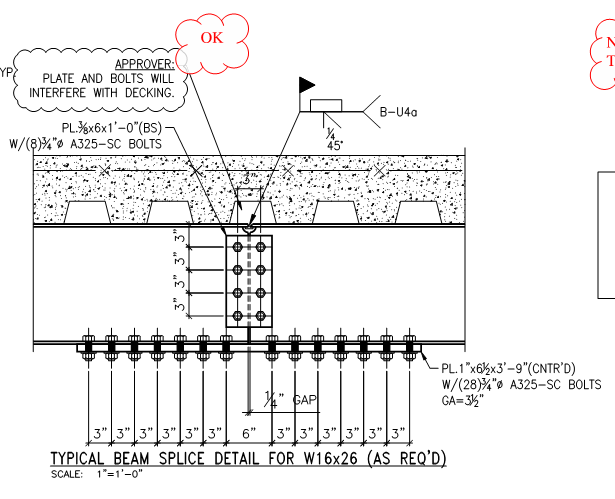bookowski
Structural
- Aug 29, 2010
- 983
See attached. This is from a shop drawing, the detailer's proposed moment splice in a beam. He is doing bolted at the top flange and a welded cover plate at the bottom (due to clearance/height issues). The plate is wider than the beam, I'm guessing that this is to avoid overhead welding. He is not welding the end, only the sides.
When checking this I feel like there should be some kind of double shear lag check to get the force up to the connection plane and then out to the corners. Am I imagining this? Any special checks for this beyond the usual? Something about this rubs me the wrong way. I'd like to weld the end but that would force him to weld overhead or flip the beam once spliced.
When checking this I feel like there should be some kind of double shear lag check to get the force up to the connection plane and then out to the corners. Am I imagining this? Any special checks for this beyond the usual? Something about this rubs me the wrong way. I'd like to weld the end but that would force him to weld overhead or flip the beam once spliced.

![[idea] [idea] [idea]](/data/assets/smilies/idea.gif)
![[r2d2] [r2d2] [r2d2]](/data/assets/smilies/r2d2.gif)

